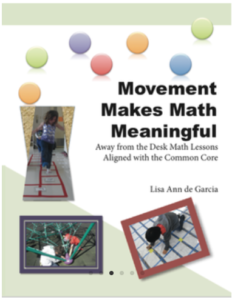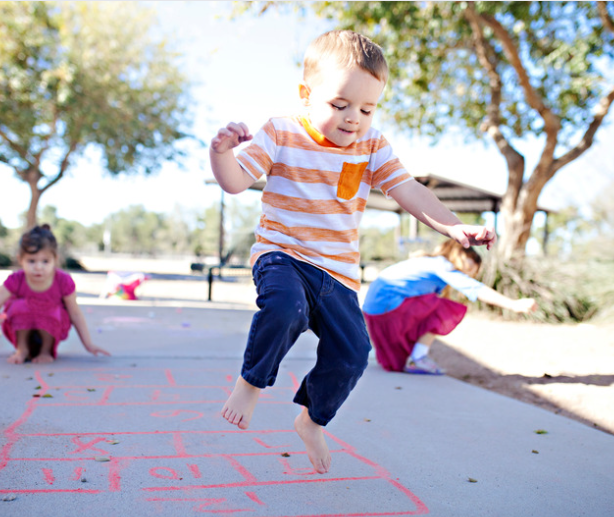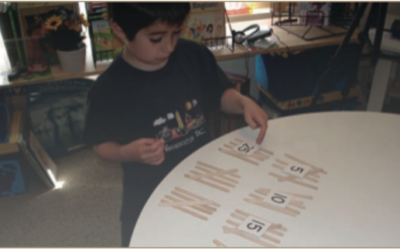It is the tradition of our education system to believe that individuals will learn best if they are presented with lots of information, in the form of a lecture or 2-dimensional written form, and seated still with eyes forward and taking notes. However, for real learning to occur, throughou our lives, hands-on learning in an environment with rich sensory experiences is optimal (Hannaford, 1995).
Even if instinctively teachers know that children need to do so, often times the classrooms are packed and teachers simply do not feel that they have the room. Others might fear chaos or a rise in discipline problems if they allow students more freedom in the classroom to move around, or simply feel that there is not enough time in the school day. However, there is plenty of evidence to support that having the children sit for long periods of time is actually doing more harm than good. In fact, it can be the very reason that discipline problems arise in the classroom in the first place.
Some movements are better than others in specifically supporting brain development. Slow, efficient, and specific movements that are designed to make sure the brain is built correctly is better than fast, disorganized movement, which is why children who are hyperactive, although always moving, still find learning difficult (Kokot, 2010). But even if teachers do know how to do this, incorporating any kind of movement in a lesson is beneficial, especially for these hyperactive learners, because they do not possess enough balance and control to sit still. Sitting still is truly uncomfortable, and their reticular activating system (RAS) of their brain needs extra stimulation of any kind to move the information on to the higher part of the cerebral cortex. Therefore, involving the senses through movement helps children pay attention and helps them recall the information by engaging the whole brain.
The research is flooding with reasons why teachers should get their students up and moving while learning new concepts. Including movement in the curriculum is beneficial because:
- It engages the whole brain in the learning
- It helps to develop social skills and increases bonding in the classroom
- It increases motivation
- It provides necessary novelty and change for the brain
- It focuses the brain to help improve concentration
- It wakes up the body when it is getting tired and keeps the brain awake and alert
- It prevents students from being overwhelmed by content
- It provides students a new perspective to the room
- It can help prevent negative effects from too much sitting
- It “awakens and activates many of our mental capacities. Movement integrates and anchors new information and experiences into our neural networks” (Hannaford 1995, p. 96)
- It has an interdependence with the body’s learning systems
- It promotes an increase in test scores (Sallis, et al 1999)
- It prepares the brain for learning by getting the hemispheres to work together and increasing blood flow to the brain
- It improves cerebrospinal fluid flow
- It allows the brain to take a break and allows it time to process and consolidate information
- It allows more information to be absorbed
- It increases retention and allows students to recall the information more efficiently
- It provides a rich, multi-sensory experience for learning, which alters brain structure
- It promotes implicit learning
- It can target the root issues of disabilities such as dyslexia, dyspraxia, dyscalculia and ADHD, and increase reading, writing fluency, eye movement, cognitive skills, dexterity, and balance (Blythe 2009; Ratey 2008)
- It promotes optimal learning since the student is actively involved in exploring physical sites and materials (Gardner 1999, p. 82 cited in Jensen)
- It, when provided through distinct patterns, can supply targeted integration to weak areas of the brain
- It stimulates developing brain growth and prevents deterioration of older brains
- It creates neuropathways that connect the cerebellum to the pre-frontal cortex, which coordinates thought, attention, emotions, and social skills
- It increases communication of the neurons by myelinating brain cells causing impulses to fire faster
- It can increase the production of neurotrophins (natural nerve growth factors)
- It increases the density of the neurons in the frontal lobes, which is linked to good academic performance and executive functioning
- It balances the neurotransmitters in the brain and can stimulate the release of noradrenaline and dopamine, responsible for good feelings, therefore can act as a mood regulator and a good way to treat depression (Babyak et al 2000; Jensen 2000)
- It produces proteins that travel through the bloodstream to our brain which are responsible for making new brain cells and growing dendrites on neurons (rats that were taught complex motor skills increased their production of BDNF 35%) (Ratey 2008)
- It not only affects the motor-sensory areas of the brain, but also in the hippocampus, a structure involved in learning, which organizes, sorts, and processes the incoming information before sending it to the cortex for long-term storage (Brink, 1995)
- It creates circuits, which can be used by the thinking areas of the brain (such as the neurons grown by learning to play the piano are used for leaning math) (Ratey 2008)
- It adds an emotional context to what is being learned because all sensory stimuli passes through the limbic system, the emotional center of the brain, before proceeding to the cortex (Blomberg & Dempsey 2008)
- It releases acetylcholine across synapses of activated neurons which stimulates and attracts dendritic growth (Hannaford 1995)
- It is fun!
There are a variety of ways to incorporate movement into the classroom. They range from taking frequent breaks, to structuring a game or lesson that involves using the whole body, to incorporating precise movements that stimulate brain development that can help to reduce learning deficits.

I have written a book, Movement Makes Math Meaningful, which is not only motivate teachers to get children to move in the classroom, but to give ideas on how to incorporate it into their math lessons. Click here to purchase.





0 Comments